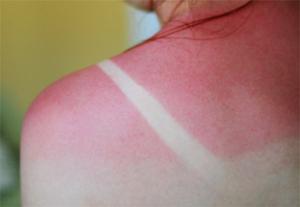Burns
Published .
Burns are one of the most common household injuries, especially among children. The term “burn” means more than the burning sensation associated with this injury. Burns are characterized by severe skin damage that causes the affected skin cells to die.
Most people can recover from burns without serious health consequences, depending on the cause and degree of injury. More serious burns require immediate emergency medical care to prevent complications and death.
There are three primary types of burns: first-, second-, and third-degree. Each degree is based on the severity of damage to the skin, with first-degree being the most minor and third-degree being the most severe. Damage includes:
- first-degree burns: red, nonblistered skin
- second-degree burns: blisters and some thickening of the skin
- third-degree burns: widespread thickness with a white, leathery appearance
Burns have a variety of causes, including:
- scalding from hot, boiling liquids
- chemical burns
- electrical burns
- fires, including flames from matches, candles, and lighters
- excessive sun exposure
The type of burn is not based on the cause of it. Scalding, for example, can cause all three burns, depending on how hot the liquid is and how long it stays in contact with the skin. Chemical and electrical burns warrant immediate medical attention because they can affect the inside of the body, even if skin damage is minor.
First-degree burns are red

First-degree burns cause minimal skin damage. They are also called “superficial burns” because they affect the outermost layer of skin. Signs of a first-degree burn include:
- redness
- minor inflammation, or swelling
- pain
- dry, peeling skin occurs as the burn heals
Since this burn affects the top layer of skin, the signs and symptoms disappear once the skin cells shed. First-degree burns usually heal within 7 to 10 days without scarring.
Second-degree burns have blisters

Second-degree burns are more serious because the damage extends beyond the top layer of skin. This type burn causes the skin to blister and become extremely red and sore. Some blisters pop open, giving the burn a wet or weeping appearance. Over time, thick, soft, scab-like tissue called fibrinous exudate may develop over the wound.
Some second-degree burns take longer than three weeks to heal, but most heal within two to three weeks without scarring, but often with pigment changes to the skin. The worse the blisters are, the longer the burn will take to heal. In some severe cases, skin grafting is required to fix the damage. Skin grafting takes healthy skin from another area of the body and moves it to the site of the burned skin.
Third-degree burns are dark and waxy

Third-degree burns are the most severe. They cause the most damage, extending through every layer of skin. There is a misconception that third-degree burns are the most painful. However, with this type of burn the damage is so extensive that there may not be any pain because of nerve damage.
Depending on the cause, the symptoms third-degree burns can exhibit include:
- waxy and white color
- char
- dark brown color
- raised and leathery texture
- blisters that do not develop
Without surgery, these wounds heal with severe scarring and contracture. There is no set timeline for complete spontaneous healing for third-degree burns.
Complications
Compared with first- and second-degree burns, third-degree burns carry the most risk for complications, such as infections, blood loss, and shock, which is often what could lead to death. At the same time, all burns carry the risk of infections because bacteria can enter broken skin.
Tetanus is another possible complication with burns of all levels. Like sepsis, tetanus is a bacterial infection. It affects the nervous system, eventually leading to problems with muscle contractions. Severe burns also carry the risk of hypothermia and hypovolemia. Dangerously low body temperatures characterize hypothermia. While this may seem like an unexpected complication of a burn, the condition is actually prompted by excessive loss of body heat from an injury. Hypovolemia, or low blood volume, occurs when your body loses too much blood from a burn.
